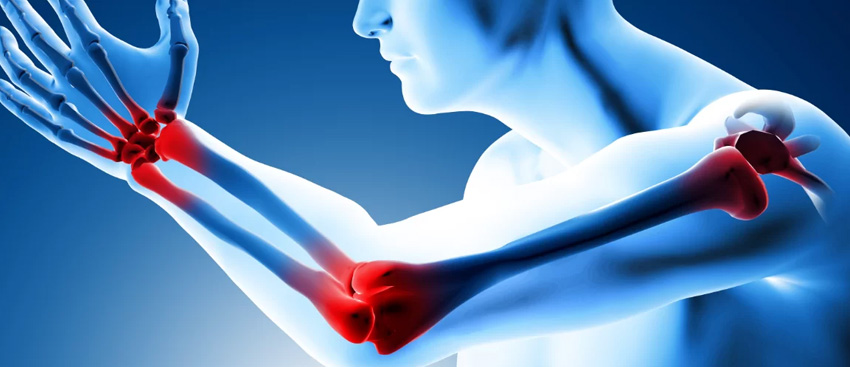
The elbow joint is formed between the lower end of the upper arm bone and the upper ends of the two bones in the forearm. The joint is designed to allow the elbow to bend and straighten and the forearm to twist to allow the palm of the hand to face upwards and downwards.
Elbow pain most commonly occurs from strain, sprain, trauma, and arthritis.
Common Conditions:
Listed are common conditions for elbow pain.
Tennis elbow (Lateral epicondylitis) is an inflammation of the tendons outer side of forearm that controls wrist extension. These muscles and tendons become damaged from overuse like repeated movement, playing tennis. You don’t have to be tennis player to get this. It’s an inflammatory condition that leads to pain and tenderness on the outside of the elbow. Most of the patient feels better with anti-inflammatory drug and physical therapy.
Golfer’s elbow( Medial epicondylitis) is an inflammation of the tendons inner side of forearm that controls wrist flexion. These muscles and tendons become damaged from overuse like repeated movement, playing golf. You don’t have to be golf player to get this. It’s an inflammatory condition that leads to pain and tenderness on the inner side of the elbow. Most of the patient feels better with anti-inflammatory drug and physical therapy.
Olecranon bursitis is also known as student’s elbow. It is characterized by pain, redness and inflammation around olecranon. Most common cause for this is blow to tip of the elbow. It can also happen from repetitive injury or infection. Patient will complain of pain, swelling, redness and restricted elbow range. Patient is normally treated with anti-inflammatory drug, cortisone shot. In some cases they have to drain fluid out to check infection. Infected bursitis is treated with antibiotics. In some cases patient may be referred to physical therapy.
Fractures are common around elbow forearm from falling on elbow. Fractures are normally treated surgically or with immobilization. Most of the patient will be referred to physical therapy followed by immobilization.
Physical Therapy:
Depending on the type of injury our physical therapist will evaluate you and plan personalized treatment to achieve goals. Please call our office if you have any questions regarding your condition.


